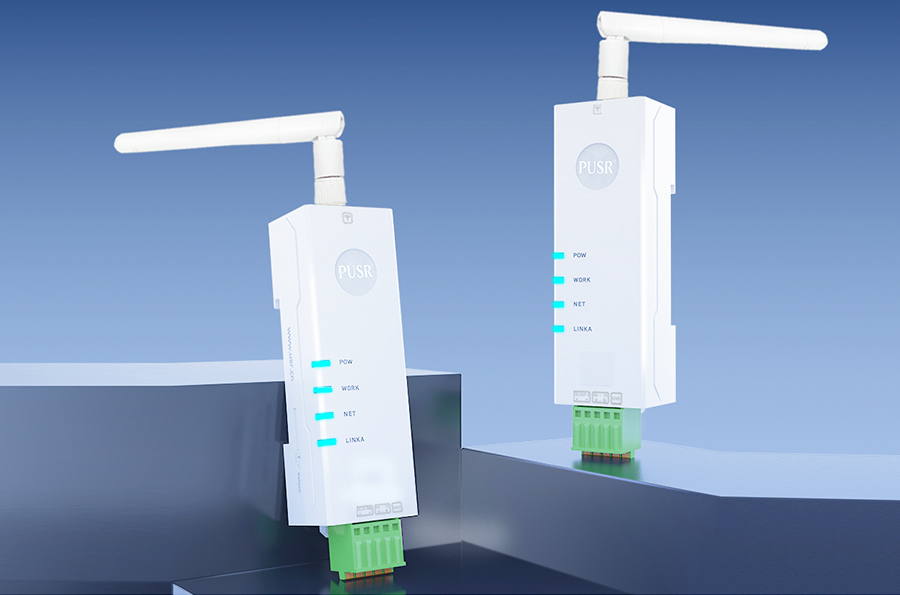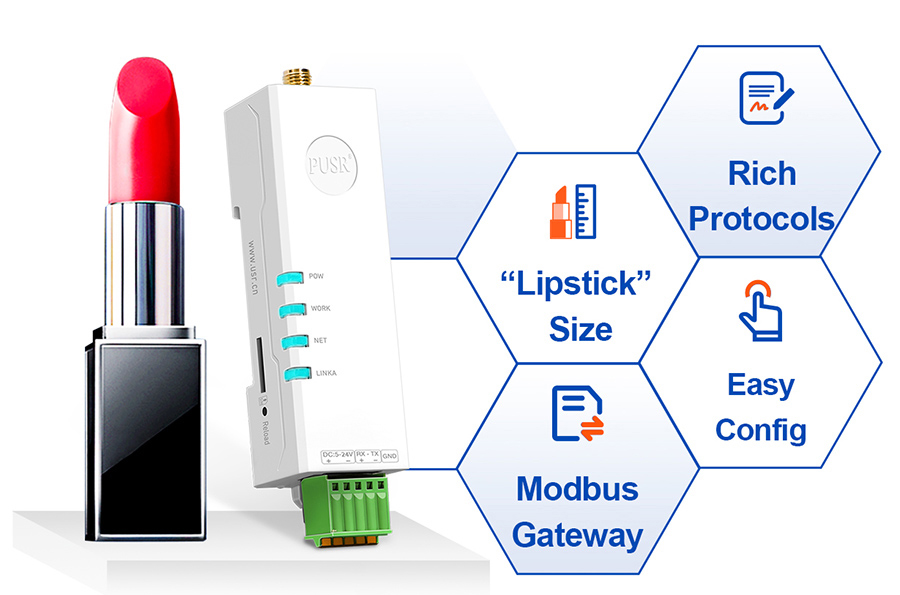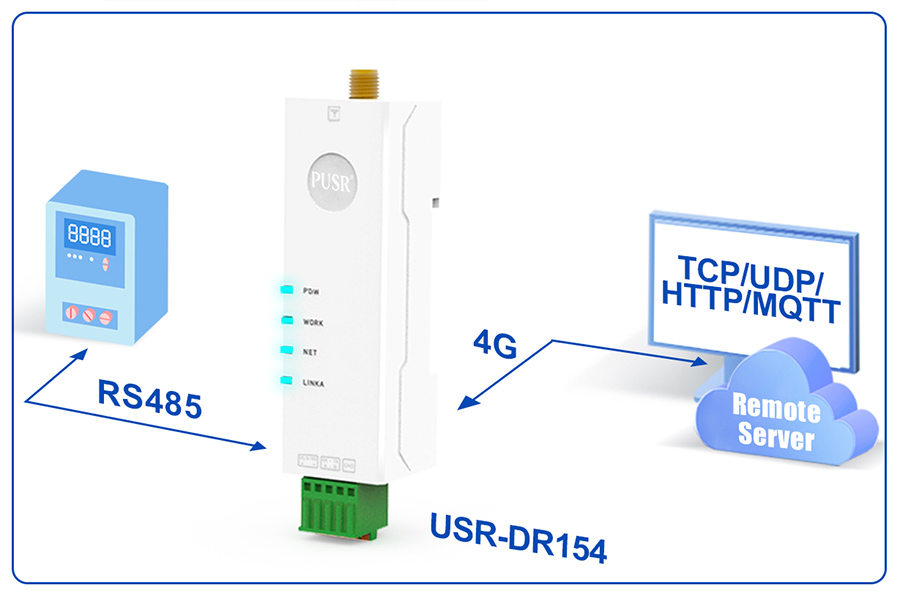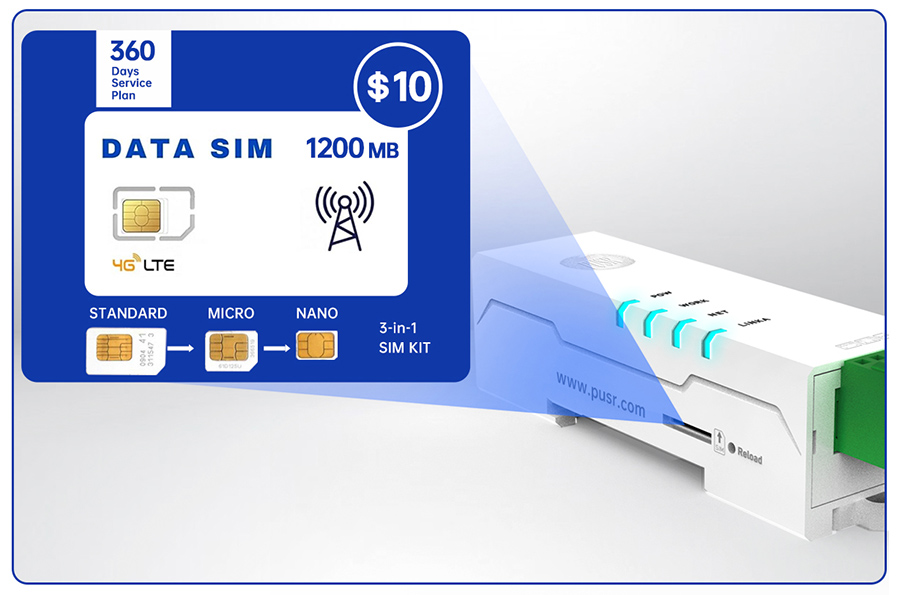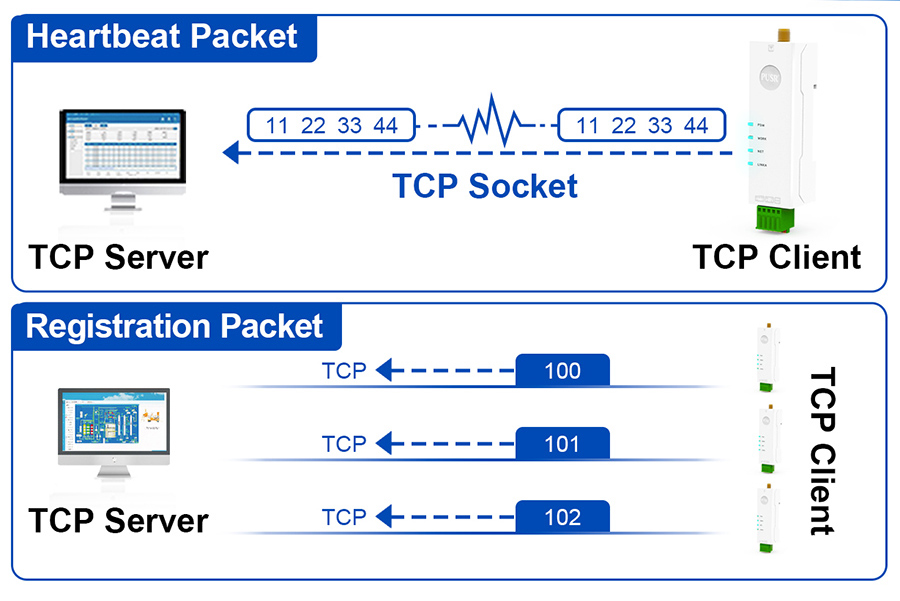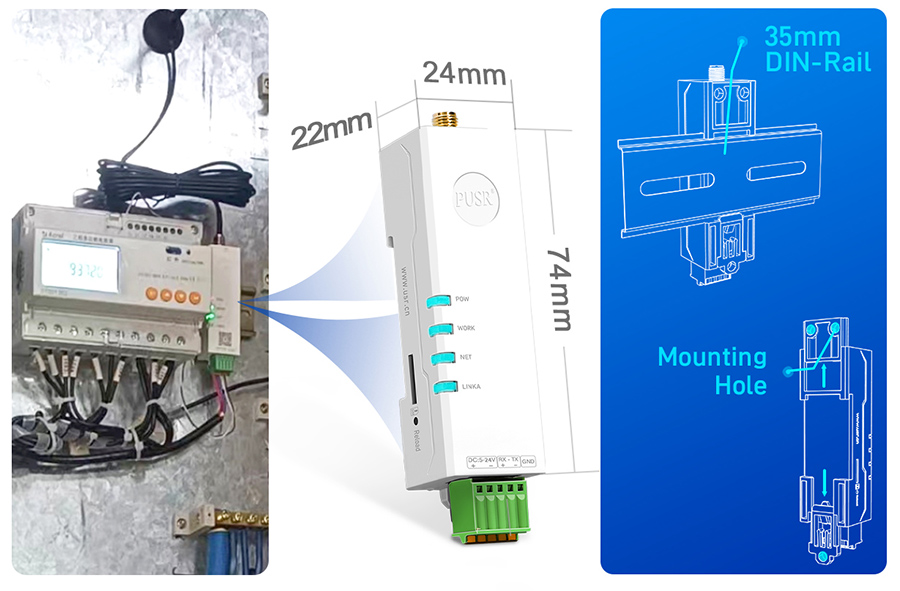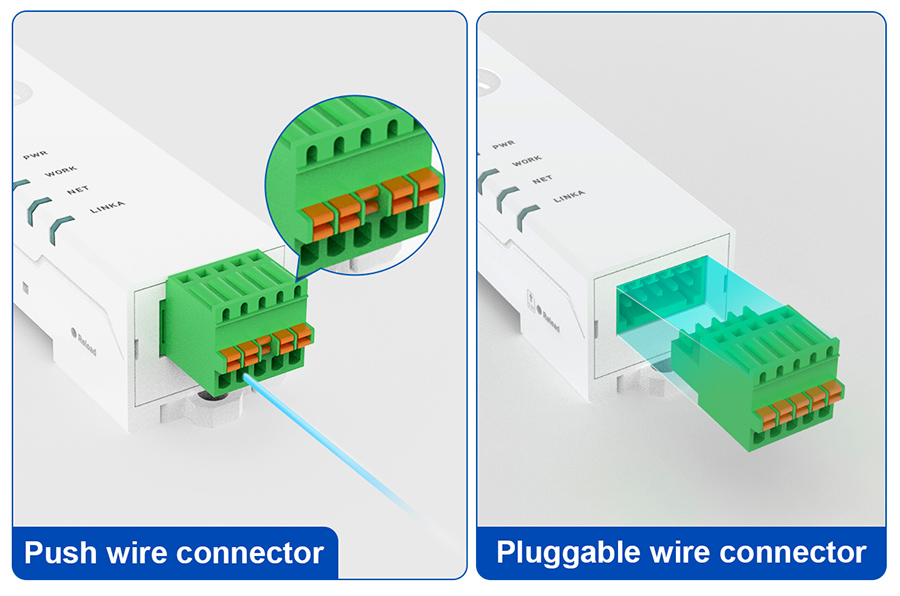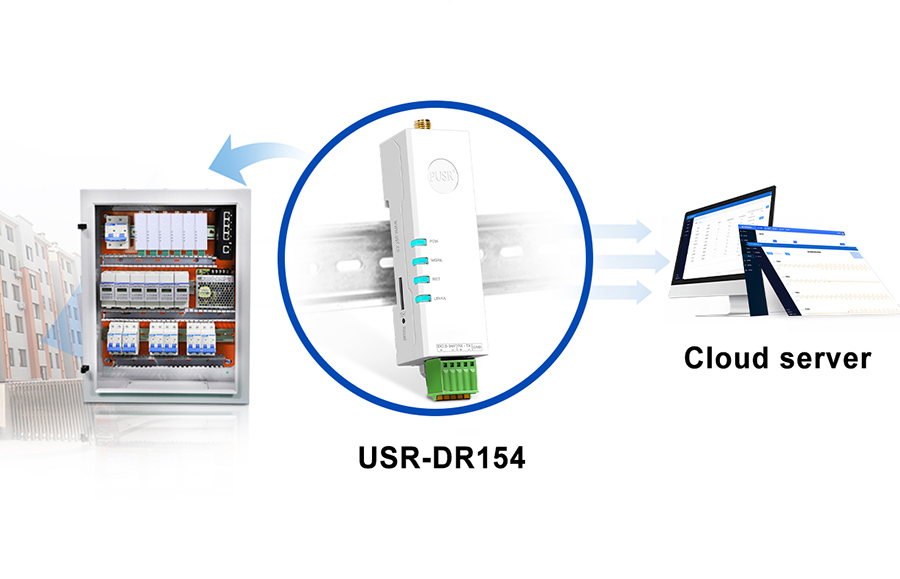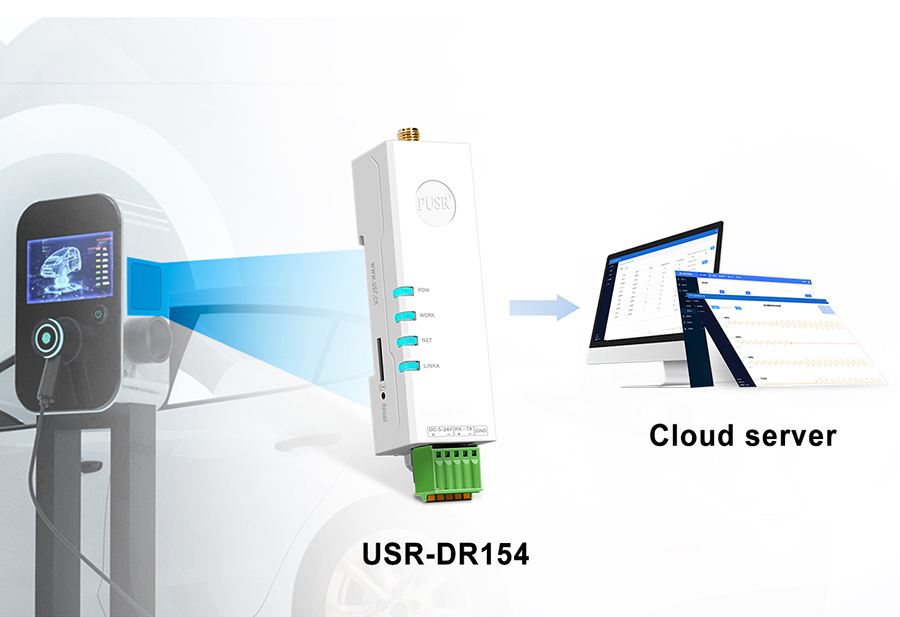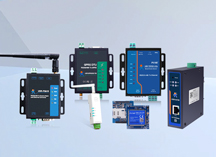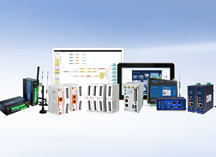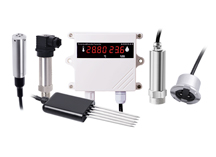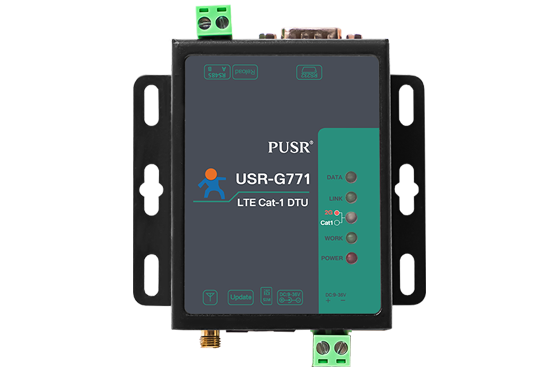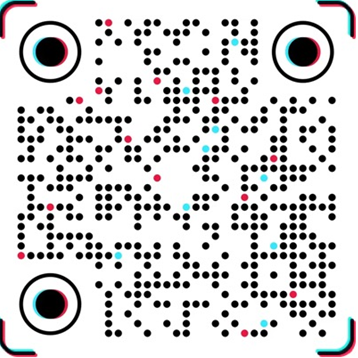In today's rapidly evolving Industrial Internet of Things (IIoT), the demand for wireless communication between devices is evolving from simple data transmission towards high reliability, low latency, and easy deployment. PUSR's Cellular Modem DR154, with its ultra-compact size, industrial-grade design, and full-function integration, has become a core hub for connecting traditional industrial equipment to cloud services. This article will provide an in-depth analysis of how this "lipstick modem" redefines the boundaries of industrial communication from dimensions such as technical principles, core functions, and application scenarios.
1. What is a Cellular Modem?
A Cellular Modem is a communication device that enables data transmission via cellular networks (e.g., 4G/5G). Its core function is to convert data from serial devices (such as sensors, PLCs, and meters) into IP data packets recognizable by the cellular network and transmit them to the cloud or a remote server via base stations. Compared to traditional wired communication, Cellular Modems break through physical distance limitations and are particularly suitable for remote areas, mobile devices, or scenarios with high wiring costs.
Differentiated Positioning of Cellular Modem DR154:
As a Cat-1 Cellular Modem, the Cellular Modem DR154 is designed specifically for industrial scenarios requiring medium-to-low data rates and high reliability. With a maximum downlink speed of 10 Mbps and an uplink speed of 5 Mbps, it balances cost and performance. It supports multiple LTE FDD/TDD bands (covering B1/3/5/7/8/20/28/38/39/40/41 bands), making it compatible with mainstream global operator networks. Compared to traditional Cat-4 or 5G modules, Cat-1 offers advantages in power consumption, cost, and coverage, making it especially suitable for industrial scenarios that do not require high real-time performance but need long-term stable operation.
2. Core Functions and Roles of Cellular Modem USR-DR154
2.1 Bidirectional Transparent Transmission between RS485 Serial Port and 4G Network
The Cellular Modem DR154 features a built-in RS485 interface that supports baud rate adaptation from 600 bps to 230,400 bps, enabling seamless connection to various industrial serial devices (such as power meters, environmental monitoring sensors, and PLC controllers). Through its "transparent transmission" mode, device data can be uploaded directly to the cloud without protocol modification, while cloud commands can be reverse-transmitted to terminal devices for remote monitoring and control.
Technical Highlights:
Multi-Protocol Support: In addition to transparent transmission, it supports standard protocols such as TCP/UDP/HTTP/MQTT/DNS/NTP/FTP, allowing flexible integration with mainstream IoT platforms like Alibaba Cloud, AWS, and Azure.
Quad-TCP Services: A single device can establish four simultaneous TCP connections, supporting primary-secondary server switching to ensure data integrity during network fluctuations.
Data Buffering Technology: Its self-developed dynamic buffering algorithm automatically adjusts data transmission frequency based on network conditions, preventing data loss due to short-term network congestion.
2.2 Industrial-Grade Reliability Design
Industrial scenarios demand extremely high device stability. The Cellular Modem DR154 achieves "crash-free" operation through the following designs:
Wide Voltage Power Supply: Supports 9-36V DC input to accommodate voltage fluctuations in industrial settings.
Hardware and Software Watchdogs: The hardware watchdog monitors system status and automatically resets in case of abnormalities, while the software watchdog prevents program freezing.
Three-Level Electrostatic Discharge Protection: Passes IEC 61000-4-2 standard testing, withstanding 8 kV contact discharge and 15 kV air discharge.
Extreme Environment Adaptability: Operates in temperatures ranging from -25°C to 75°C and humidity up to 95% RH without condensation, meeting outdoor or harsh environmental requirements.
3. Modbus Gateway: The "Cloud Enablement" Tool for Traditional Devices
Modbus is one of the most widely used communication protocols in the industrial sector. However, traditional Modbus RTU devices only support serial communication and cannot directly connect to the cloud. The Cellular Modem DR154, through its built-in Modbus gateway functionality, enables protocol conversion from Modbus RTU to Modbus TCP, allowing legacy devices to gain IoT capabilities without modification.
Application Scenario Examples:
Power Monitoring Systems: Uploads Modbus RTU meter data from substations to energy management platforms via 4G for remote meter reading and power consumption analysis.
Agricultural Irrigation Control: Connects field soil moisture sensors through the Modbus gateway to automatically start/stop irrigation equipment based on cloud commands.
Factory Equipment Networking: Transmits Modbus RTU PLC data from production lines to MES systems for real-time production data visualization.
Technical Advantages:
Zero-Configuration Mapping: Automatically identifies Modbus device addresses and register types, reducing manual configuration errors.
Multi-Slave Support: A single Cellular Modem DR154 can simultaneously connect to 32 Modbus RTU slave devices, lowering deployment costs.
Data Preprocessing: Supports filtering and calculations (e.g., cumulative values, averages) of Modbus data before uploading, reducing cloud processing burdens.
4. SSL Encryption: The "Protective Shield" for Data Security
Industrial IoT data involves sensitive information such as production safety and business secrets, making security during transmission crucial. The industrial modem DR154 supports SSL/TLS 1.2 encrypted transmission and ensures the legitimacy of both communication parties through bidirectional certificate verification, preventing data theft or tampering.
Security Features:
Certificate Management: Supports pre-installed CA certificates and client certificates, with flexible configuration of certificate validity periods and update mechanisms.
Encryption Algorithms: Supports mainstream encryption algorithms such as AES-128/256 and RSA-2048, meeting Grade 2.0 Level 3 security requirements.
Firewall Penetration: Transmits data through standard HTTPS port (443) to avoid connection failures due to enterprise firewall restrictions.
Typical Applications:
Financial Terminal Networking: Connects devices like ATMs and POS machines to ensure secure transaction data transmission.
Smart City Monitoring: Transmits data from public safety cameras or environmental monitoring stations to prevent data leaks.
Medical Device Networking: Connects remote monitors or medical robots to safeguard patient privacy data.
5. FOTA Remote Upgrades: The "Continuous Evolution" of Device Management
Traditional industrial device upgrades require on-site operations, which are costly and inefficient. The industrial modem DR154 supports FOTA (Firmware Over-The-Air) remote firmware upgrades, allowing new firmware to be pushed via the cloud and enabling device functionality iteration without manual intervention.
Upgrade Mechanisms:
Differential Upgrades: Only transmits the differing parts of the firmware, reducing upgrade data volume (typical upgrade package < 100 KB).
Breakpoint Resumption: Resumes upgrades from the interruption point after network disconnections, avoiding redundant downloads.
Upgrade Rollback: Automatically reverts to the previous version if an upgrade fails, ensuring device availability.
Batch Operations: Supports simultaneous upgrades of hundreds of devices, significantly reducing operational and maintenance costs.
Application Value:
Function Expansion: Adds new protocol support or optimizes communication algorithms through remote upgrades.
Vulnerability Repair: Quickly responds to security vulnerabilities, reducing the risk of attacks.
Version Unification: Ensures all devices run the same firmware version for easier management.
6. Ultra-Compact Size and DIN Rail Installation: The Perfect Balance of Space and Efficiency
The industrial cellular modem USR-DR154 features a "lipstick-sized" design (85 mm × 34 mm × 23 mm), with a volume only one-third that of traditional industrial cellular modems, yet it integrates core components such as a 4G module, SIM card slot, antenna interface, and RS485 port. Its DIN rail installation method further enhances deployment flexibility:
Dual-Mode Installation: Supports standard 35 mm DIN rail installation or ear-mounted installation, fitting into narrow spaces like distribution cabinets and control boxes.
Press-Fit Terminals: The RS485 wiring uses screwless terminals, allowing wires to be inserted/removed with a single press, enabling one-person wiring in 10 seconds.
Bluetooth Configuration: Device parameters can be configured nearby via a mobile app or computer Bluetooth tool, avoiding the need for climbing or disassembling equipment.
Scenario Adaptations:
Power Distribution Cabinets: Its compact design allows direct installation beside circuit breakers, saving cabinet space.
Outdoor Cabinets: Ear-mounted installation eliminates the need for rails, with screws fixing it to the cabinet wall.
Mobile Devices: Paired with a vehicle power supply, it can be rapidly deployed in vehicles or mobile monitoring stations.
7. Application Scenarios and Target Users
7.1 Typical Application Scenarios
Industrial Automation: Connects devices like PLCs, HMIs, and sensors for real-time production data upload and remote control.
Energy Management: Monitors the operational status of photovoltaic power plants, wind farms, and energy storage systems to optimize energy scheduling.
Smart Cities: Connects municipal facilities like smart manhole covers, street light controllers, and environmental monitoring stations to enhance management efficiency.
Agricultural IoT: Collects soil temperature and humidity as well as meteorological data to control irrigation and greenhouse environments.
Logistics Tracking: Locates cargo positions via GPS+4G and provides real-time transportation status feedback.
7.2 Target User Groups
System Integrators: Require rapid deployment of IoT solutions to reduce development costs and cycles.
Device Manufacturers: Add networking capabilities to traditional devices to enhance product value.
Operational and Maintenance Service Providers: Reduce on-site inspection frequencies through remote management to lower operational costs.
End Users: Directly use networked devices for automated monitoring to improve production efficiency.
Redefining the "Small but Powerful" in Industrial Communication
The PUSR 4G modem DR154, with its "ultra-compact size, full-function integration, and industrial-grade reliability," addresses pain points such as complex deployment, high costs, and maintenance difficulties in traditional industrial communication devices. Its supported Modbus gateway, SSL encryption, and FOTA upgrade capabilities further expand application boundaries, enabling seamless integration of legacy devices into the IoT ecosystem. Whether in power, energy, agriculture, or smart city sectors, the 4G modem DR154 serves as an "invisible bridge" driving digital transformation across industries.
